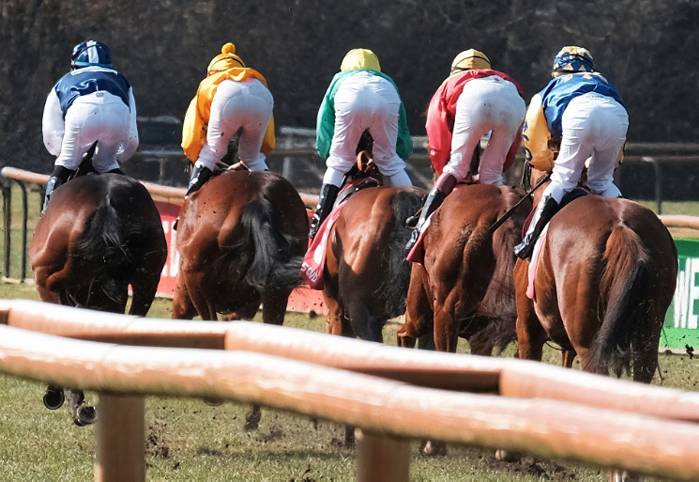It's a technology that has been successfully tested on racehorses, but it could also make equestrian sport safer in general: a biometric sensor in the saddle pad can detect the slightest anomalies in movement and thus help reduce the risk of serious injuries to horses.
Researchers led by Dr. Warwick Bailey of Washington State University conducted their research using a biometric sensor used by Stride Safe Company Designed to monitor thoroughbred racehorses during racing and training, the team analyzed the data collected and identified subtle changes in stride length that were associated with an increased risk of injury, enabling rescue interventions before a catastrophic fall occurred. The research team published its findings in the Journal of the American Veterinary Association — and stressed that during the study, three horses at risk of injury were tracked down and saved from further potentially fatal races.
The biometric sensor used in the study tracks changes in the speed and direction of the horse’s leg and body movements and creates graphs of its stride pattern. An algorithm processes this data and compares it to the “ideal stride” derived from healthy, high-performance racehorses.
Using data from over 6,500 starts, the algorithm also identifies similarities to the strides of horses that subsequently suffered so-called “catastrophic injuries” (these are, for example, poorly diagnosed fractures that are the most common reason horses are involved in fatal accidents or have to be euthanized; they are also the most common cause of falls and serious injuries to riders). The horse is then assigned an injury risk factor from 1 to 5 based on how far its stride deviates from ideal and how similar it is to the stride associated with the injury.
Risk status was graded from 1 to 5. Horses with a risk factor of 1 had a stride pattern within 2 standard deviations (SDs) of the ideal stride, while horses with a risk factor of 5 had a stride pattern that was more than 5 SDs from the ideal stride. Factor 5 was 950 times more likely to have a catastrophic injury as such with a risk factor of 1.
In a database of 6618 onsets, 70% were classified as risk factor 1, 16.5% as risk factor 2, 7% as risk factor 3, 3% as risk factor 4, and 3.5% as risk factor 5.
“These racehorses are screened extensively before a race, but catastrophic injuries still happen, and not because they stepped into a ditch or took a wrong step. A large percentage of them have pre-existing conditions that don’t show up right away on clinical examination,” said Dr. Dennis McSweeney, a resident physician in equine surgery at WSU, who was the study’s lead author. “We know from our sensor data that most catastrophic injuries have a distinct velocity pattern. Now we can detect if something is wrong with their stride and intervene before a serious injury occurs.”
“We know there are about 1.25 catastrophic injuries per 1,000 starts, but identifying these horses before such an event occurs is like looking for a needle in a haystack because they are often personally sound at pre-race inspection and many horses show no loss of performance,” said McSweeney. “But if you can narrow it down, like the 3.5% we had in this group, it makes it much easier to intervene and hopefully prevent injuries.”
To test and refine the algorithm, a sensor was attached to horses competing at Churchill Downs and Ellis Park in Kentucky from April 29 to July 2, 2023. McSweeney was responsible for collecting clinical data on the high-risk horses.
The team focused their report on two 3-year-old stallions and one 4-year-old stallion that were rated as having the highest risk factor of 5. In each case, sensors alerted veterinarians and trainers to potential injury risks. The abnormal gait pattern was observed either during a race (cases 1 and 2) or during training (case 3, a training race in which the horse was allowed to run at a fast pace, often close to its maximum speed).
Veterinary examinations and positron emission tomography (PET) using 18F sodium fluoride (18F-NaF) were then performed in each case. The research team found significant 18F-NaF uptake in the condyles of the third metatarsal in cases 1 and 2 and identified an increased risk of condylar fracture in these horses. In case 3, the pattern of 18F-NaF uptake suggested that the third carpal bone was likely the cause of the horse's lameness. X-rays confirmed an impending plate fracture.
“Cases 1 and 2 returned to racing after a period of convalescence and were identified by the sensor system as no longer at risk for catastrophic musculoskeletal injury,” the researchers reported. “Cases 3 resumed training after convalescence but has not yet competed again.”
“These are prime examples of how this technology can protect horses from serious injury and falls,” McSweeney said. “With this information, trainers and their veterinarians were able to pull the emergency brake, and now these horses have a longer career ahead of them and can avoid a catastrophic injury.”
McSweeney hopes the sensors will become standard in all Thoroughbred racing and training. “I think it will have a huge impact,” she said. “Sensors can save horses’ and riders’ lives — they have.”
The study, “Using Accelerometers to Identify High Risk of Catastrophic Musculoskeletal Injury in Three Racing Thoroughbreds,” by Dennis McSweeney, Mikael Holmstrom, Kevin D. Donohue, David H. Lambert, and Warwick M. Bailey, was published June 21, 2024, in the Journal of the American Veterinary Association and is available in the original English version. here It can be read.

“Certified tv guru. Reader. Professional writer. Avid introvert. Extreme pop culture buff.”







More Stories
Samsung Quantum Dot TV: Art meets technology
Pitch: €56m for energy startup Reverion
Plastoplan: Plastics for Energy Transition